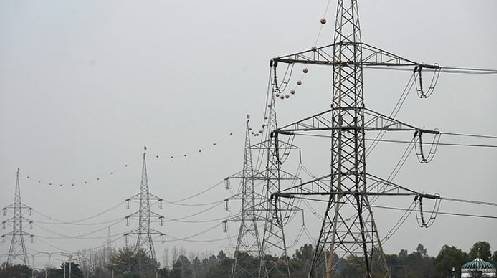ISLAMABAD: In a landmark reform, the federal government has announced plans to open Pakistan’s electricity market from January 2026, giving consumers the freedom to choose their own power supplier — a first in the country’s energy history.
Initially, the reform will apply to consumers using one megawatt (MW) or more, allowing industries and large businesses to buy electricity from any licensed company instead of being bound by regional monopolies. The move aims to introduce competition, improve efficiency, and eventually lead to fairer prices.
The development was shared by Power Division Secretary Dr. Fakhar Alam Irfan during a briefing to the National Assembly’s Standing Committee on Power.
“We are already moving towards an open electricity market,” Dr. Alam said. “This transition will promote competition and bring better pricing for consumers over time.”
Tackling Circular Debt
Dr. Alam highlighted ongoing efforts to control the power sector’s long-standing circular debt, noting that while it hasn’t increased over the past three years, it remains a serious concern.
“In 2024, financial losses stood at Rs600 billion, which have now been reduced to Rs397 billion,” he said, adding that the government continues to work on further cuts.
He explained that losses exceeding NEPRA’s benchmarks don’t immediately affect consumers but eventually contribute to circular debt, which is later covered through the federal budget. He also directed that power feeders with losses below 20% should not be shut down, as doing so harms both consumers and government revenues.
Karachi’s Power Woes
Committee member Shahida Rehmani raised concerns over Karachi’s electricity crisis, criticizing K-Electric’s monopoly in the country’s largest city.
“Karachi is a mega city but relies on only one power company,” she said. “There are serious electricity and infrastructure issues, and while promises are made, implementation remains absent.”
Her remarks echoed the frustration of millions of Karachi residents who face frequent power outages, billing discrepancies, and lack of alternatives.
Solar Energy Surge
The committee was also briefed on the rapid expansion of solar power in Pakistan. Officials reported that net-metering capacity has surpassed 6,000 MW, while off-grid solar installations have exceeded 1,200 MW, as verified by satellite data.
However, the growing share of solar energy is creating new challenges for the national grid. Electricity supplied through the grid carries around Rs14 per unit in capacity charges and Rs9 in taxes, making it far more expensive than solar power.
Despite these challenges, the government reaffirmed its commitment to achieving a load-shedding-free Pakistan, ensuring stability and affordability through ongoing reforms.
What It Means for Consumers
While the 2026 market opening will initially benefit large power users, officials plan to gradually extend this freedom to smaller consumers and households.
In the future, Pakistanis could enjoy the ability to choose their electricity provider just like their mobile network, marking a transformative step toward a more competitive and consumer-driven energy market.
Story by By Zaigham Naqvi







